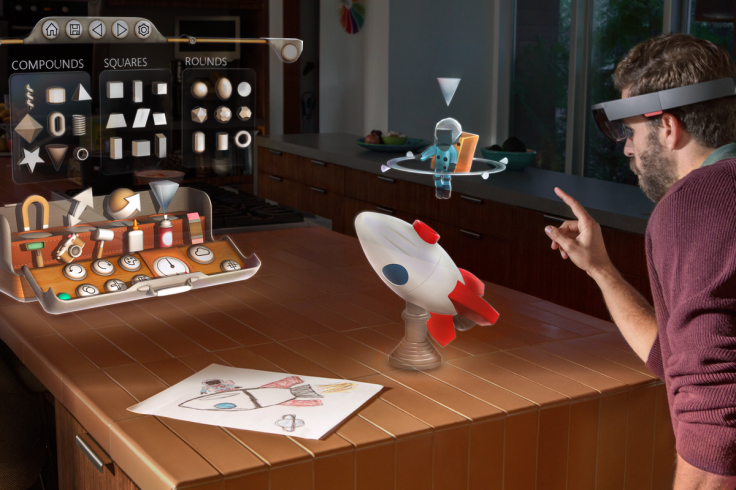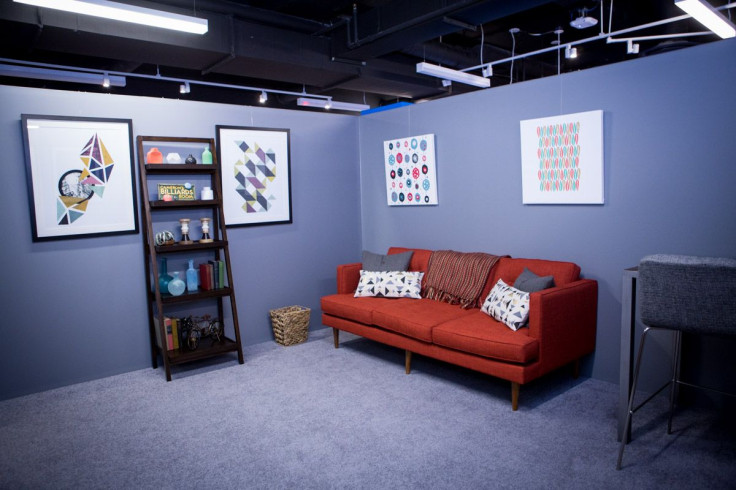HoloLens Hands-On: Microsoft's VR/AR Headset Lets You Battle Aliens, Print In 3D And Wander The Solar System

Microsoft HoloLens has arrived at the Fifth Avenue store in New York City. From Thursday, lucky developers will have the chance to try out the augmented reality kit in a specially-designed demo experience. Ahead of the grand unveiling, International Business Times went and tried out the demo.
In a word, it's phenomenal. Microsoft is letting developers on the Windows Insider programme sign up online, come into the store and run through three demonstrations: a workshop, a video game, and a storytelling experience. The third has never been seen before, and shows the HoloLens off in an entirely new light.
Each one provides a unique look at what the device is capable of, so developers have an idea of what they can make come to life. The developer kit won't be on sale until the first quarter of 2016, but these sessions are an ideal way for coders to get acquainted.
After a brief intro video and rundown of the basics, the team took a pupilometer reading. This is done with a special device that measures the distance between the center of your two pupils. In technical terms, this figure is known as the interpupillary distance, or IPD, and is vital for calibrating binocular systems like the HoloLens. In the final unit, the pupilometer will be built into the HoloLens itself, but on demo day the reading was taken with a separate device.
Shooting Robots And Painting Signs
Once the HoloLens was calibrated, the first demo started, a software toolkit called HoloStudio. A virtual toolbox appeared in front of me, and I could open it with the "air tap" gesture. I then pulled a virtual sign out of the box and hung it on the physical wall. The demo walks through a variety of 3D printing tools, culminating in a 3D object "print preview." Creations can move around a room, so you can visualise how an ornament will look when 3D printed and placed in its surroundings. Changing how an object looks is as simple as saying "copy" or picking up a virtual paint can. At the end, the software offers a range of export options including printing and sending to OneDrive.
Next up was "Project X-Ray." This is a game Microsoft demonstrated at its October event to rapturous applause, as robots broke their way through the stage floor and the presenter shot them away with a virtual gun. The rules are simple: the crosshairs move wherever the wearer is looking, shoot the bad guys and don't get shot yourself. For this demo, I was handed an Xbox One controller and told to pull the right trigger to fire, and the left trigger to activate a special X-Ray power to see through walls. Once I got the hang of it, I was ducking and diving out of the way of lasers and fireballs, shooting the bad guys through walls and facing off against a robot invasion happening in a very ordinary living room. Phenomenal.

Watch This Space
The final third of the experience is a brand new storytelling adventure. This is something Microsoft has never shown off before, and it felt truly groundbreaking. A fictional luxury watchmaker talks you through a new watch hovering above the table in front of you, describing the craftsmanship that was put into making the piece. In the next instant, the watch expands in size, the pieces levitate apart, and I'm able to move around and see in ultra-fine detail every minuscule component.
If it all sounds like science fiction, that's how it felt in-person. Being able to see this watch on the table in front of you, seeing it expand before your very eyes, was mesmerising. I could bring my ear up close to the watch on the table, listen to it ticking in the ear that was closer. I could move myself around a watch that moments ago was a tiny object on the table in front of me, which now took up an entire table.
After the watch presentation, the demo explains the HoloLens software used to design and create the show. A "presenter mode" shows a virtual autocue and gives a heads-up as to where the viewers are looking, while an "edit mode" lets the user drag and drop files into relevant points of the story.

The software can generate a heat map for specific points in the story, to show where people tend to look during certain moments. In the demonstration, it is shown that one aspect of the watch that draws people's attention does not have any relevant text displayed alongside. The demo asks the user to add in a new text tag, and the story is modified. This is all done on the HoloLens; there's no computers involved in this editing process.
The demo wraps up with a brief glimpse of what's possible with these storytelling features. Suddenly, my room was filled with stars, and I looked down and realised I was standing in the center of the solar system. Taking a moment to just observe the planets, whizzing around in the middle of the room, was simply stunning.
Microsoft has teamed up with several companies, including Volvo, NASA and Autodesk, to explore the possibilities of HoloLens. After the demo, it's hard not to imagine all the cool ideas developers could make come to life. HoloLens may be a while away from launching, but the future is bright if Microsoft can mass produce this experience.
© Copyright IBTimes 2024. All rights reserved.












